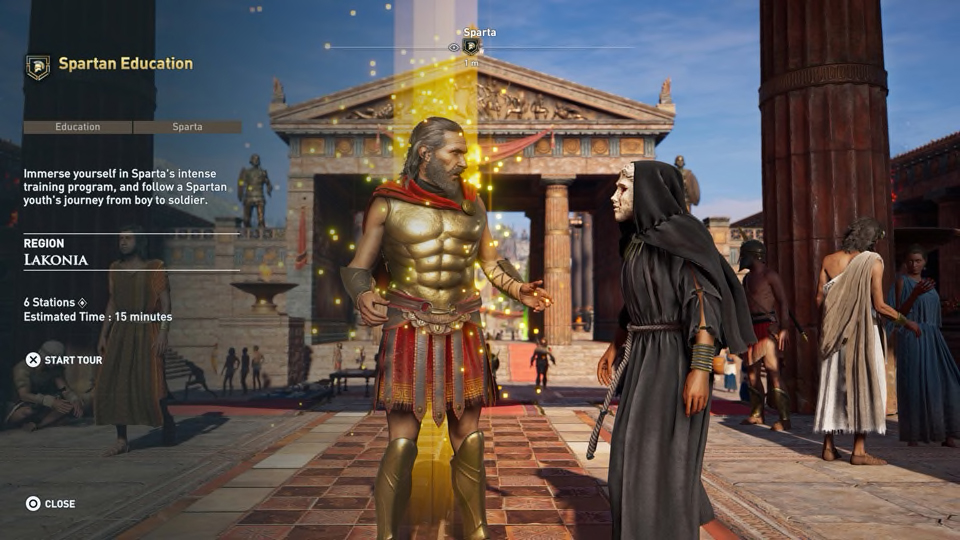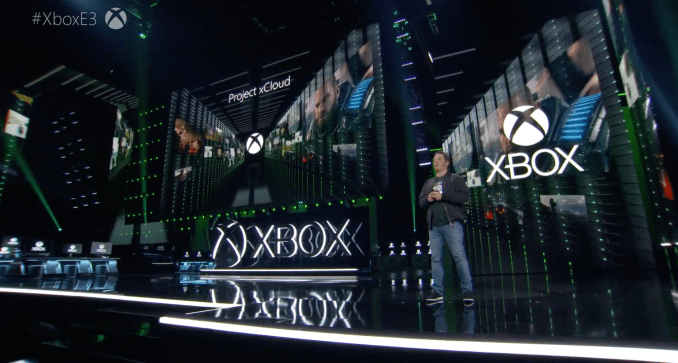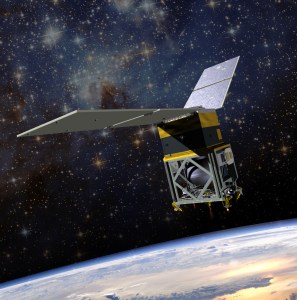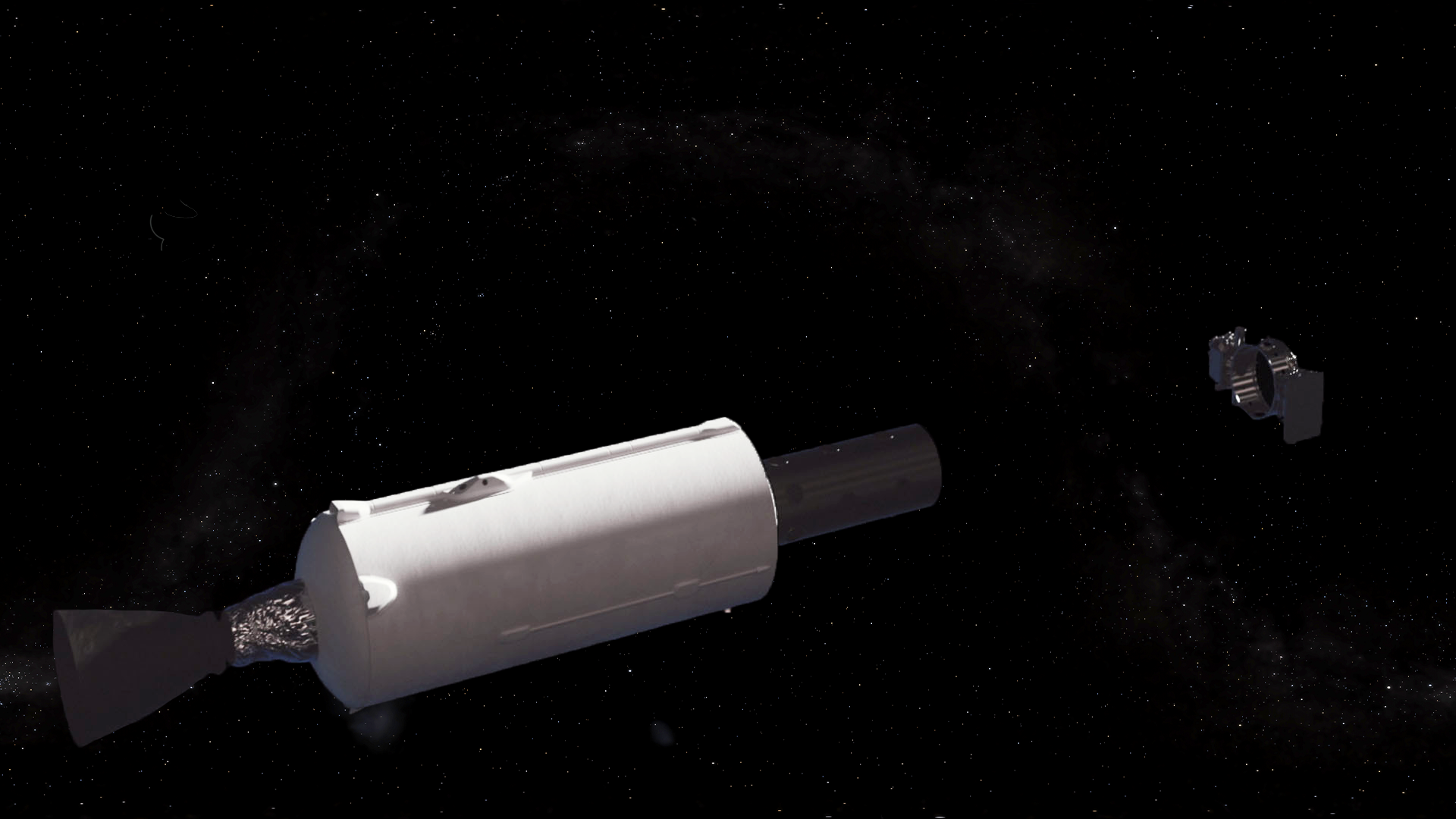One of the biggest problems in media today is so-called “fake news,” which is so highly pernicious in part because it superficially resembles the real thing. AI tools promise to help identify it, but in order for it to do so, researchers have found that the best way is for that AI to learn to create fake news itself — a double-edged sword, though perhaps not as dangerous as it sounds.
Grover is a new system created by the University of Washington and Allen Institute for AI (AI2) computer scientists that is extremely adept at writing convincing fake news on myriad topics and as many styles — and as a direct consequence is also no slouch at spotting it. The paper describing the model is available here.
The idea of a fake news generator isn’t new — in fact, OpenAI made a splash recently by announcing that its own text-generating AI was too dangerous to release publicly. But Grover’s creators believe we’ll only get better at fighting generated fake news by putting the tools to create it out there to be studied.
“These models are not capable, we think right now, of inflicting serious harm. Maybe in a few years they will be, but not yet,” the lead on the project, Rowan Zeller, told me. “I don’t think it’s too dangerous to release — really, we need to release it, specifically to researchers who are studying this problem, so we can build better defenses. We need all these communities, security, machine learning, natural language processing, to talk to each other — we can’t just hide the model, or delete it and pretend it never happened.”
Therefore and to that end, you can try Grover yourself right here. (Though you might want to read the rest of this article first so you know what’s going on.)
Voracious reader
The AI was created by having it ingest an enormous corpus of real news articles, a dataset called RealNews that is being introduced alongside Grover. The 120-gigabyte library contains articles from the end of 2016 through March of this year, from the top 5,000 publications tracked by Google News.
By studying the style and content of millions of real news articles, Grover builds a complex model of how certain phrases or styles are used, what topics and features follow one another in an article, how they’re associated with different outlets, ideas, and so on.
This is done using an “adversarial” system, wherein one aspect of the model generates content and another rates how convincing it is — if it doesn’t meet a threshold, the generator tries again, and eventually it learns what is convincing and what isn’t. Adversarial setups are a powerful force in AI research right now, often being used to create photorealistic imagery from scratch.
It isn’t just spitting out random articles, either. Grover is highly parameterized, meaning its output is highly dependent on input. So if you tell it to create a fake article about a study linking vaccines and autism spectrum disorders, you are also free to specify that the article should seem as if it appeared on CNN, Fox News, or even TechCrunch.
I generated a few articles, which I’ve pasted at the bottom of this one, but here’s the first bit of an example:
Serial entrepreneur Dennis Mangler raises 6M to create blockchain-based drone delivery
May 29, 2019 – Devin Coldewarg
Drone delivery — not so new, and that raises a host of questions: How reliable is the technology? Will service and interference issues flare up?
Drone technology is changing a lot, but its most obvious use — package delivery — has never been perfected on a large scale, much less by a third party. But perhaps that is about to change.
Serial entrepreneur Dennis Mangler has amassed an impressive — by the cybernetic standards of this short-lived and crazy industry — constellation of companies ranging from a top-tier Korean VC to a wholly owned subsidiary of Amazon, ranging from a functional drone repair shop to a developer of commercial drone fleets.
But while his last company (Amazon’s Prime Air) folded, he has decided to try his hand at delivery by drone again with Tripperell, a San Francisco-based venture that makes sense of the cryptocurrency token space to create a bridge from blockchain to delivery.
The system they’re building is sound — as described in a new Medium post, it will first use Yaman Yasmine’s current simple crowdsourced drone repair platform, SAA, to create a drone organization that taps into a mix of overseas networks and domestic industry.
From there the founders will form Tripperell, with commercialized drones running on their own smart contracts to make deliveries.
Not bad considering it only took about ten seconds to appear after I gave it the date, domain, my name (ish), and the headline. (I’d probably tweak that lede, but if you think about it, it does sort of make sense.)
Note that it doesn’t actually know who I am, or what TechCrunch is. But it associates certain data with other data. For instance, one example the team offered was an editorial “in the style of,” to co-opt cover bands’ lingo, Paul Krugman’s New York Times editorials.
I don’t think it’s too dangerous to release — really, we <em>need</em> to release it.
“There’s nothing hard coded — we haven’t told the model who Paul Krugman is. But it learns from reading a lot,” Zeller told me. The system is just trying to make sure that the generated article is sufficiently like the other data it associates with that domain and author. “And it’s going to learn things like, ‘Paul Krugman’ tends to talk about ‘economics,’ without us telling it that he’s an economist.”
It’s hard to say how much it will attempt to affect a given author’s style — that may or may not be something it “noticed,” and AI models are notoriously opaque to analysis. Its style aping goes beyond the author; it even went so far as creating the inter-paragraph “Read more” links in a “Fox News” article I generated.
But this facility in creating articles rests on the ability to tell when an article is not convincing — that’s the “discriminator” that evaluates whether the output of the “generator” is any good. So what happens if you feed the discriminator other stuff? Turns out it’s better than any other AI system right now, at least within the limits of the tasks they tested it on, at determining what’s fake and what’s real.
Natural language limitations
Naturally Grover is best at detecting its own fake articles, since in a way the agent knows its own processes. But it can also detect those made by other models, such as OpenAI’s GPT2, with high accuracy. This is because current text-generation systems share certain weaknesses, and with a few examples those weaknesses become even more obvious to the discriminator.
“These models have to make one of two bad choices. The first bad option is you just trust the model,” Zeller said. In this case, you get a sort of error-compounding issue where a single bad choice, which is inevitable given the number of choices it has to make, leads to another bad one, and another, and so on; “Without supervision they often just go off the rails.”
“The other choice is to play it a bit safer,” Zeller explained, citing OpenAI’s decision to have the generator create dozens of options and pick the most likely one. This conservative approach avoids unlikely word combinations or phrases — but as Zeller points out, “human speech is a mix of high probability and low probability words. If I knew what you were going to tell me, you wouldn’t be speaking. So there have to be some things that are hard to anticipate.”
These and other habits in text generation algorithms make it possible for Grover to identify generated articles with 92 percent accuracy.
And no, you’re very clever, but you can’t just take the ones it doesn’t detect and sort of breed them together to make more convincing ones. As it turns out, this type of strategy doesn’t actually help a lot — the resulting “super-algorithms” still stumble in similar ways.
Self-extinguishing danger
On the face of it, Grover seems like a pretty dangerous tool. With a bit of tweaking the articles it created for me could easily pass the smell test of a casual reader unfamiliar with the topic. So why is the team releasing it and the dataset it’s based on?
The more articles we have from an adversary, the easier it is to detect that adversary.
First of all it’s not just going to be an app you download — “We want researchers to easily be able to use the model, but we’re not making it completely public,” Zeller clarified. But even so, the likelihood of it being used for evil is counterintuitively low.
“If you just wanted to write ten take news articles, you could just write them yourself,” he points out — and indeed, it’s hard to imagine some mastermind going to all this trouble just to generate a handful. “But if you want to write a hundred thousand, you could use our tool — but the more articles we have from an adversary, the easier it is to detect that adversary.” So it would be a self-defeating plot resulting in a sort of “known fake news” that’s easy to flag.
That assumes, however, that there’s a method for applying algorithms like Grover’s to news at large, or that individuals are motivated to question or verify articles they read in the first place. Unfortunately that’s not anywhere near the case.
“This is a totally non machine learning related question,” Zeller admitted. “How do we make this useful for people? How do we make it so when people read news online, they can check if it’s fake, and want to?”
No AI can generate a good answer to that prompt. Here’s hoping we humans are up to the task.
Appendix
I generated several articles to study, and some were better than others. I didn’t save all of them, but I’ve put a few below for anyone curious to see what Grover’s output looks like without going and generating their own. The results are entertaining and far from nonsense, though anyone who reads closely at all would see some red flags. I’ve only slightly formatted for readability and haven’t changed any words.
The first is a redo of the one I quoted above, with a slightly tweaked headline (that’s misinterpreted in an unexpected yet logical way):
Serial founder Dennis Mangler raises 6M to create blockchain-based drone delivery
May 30, 2019 – Devin Coldewey, techcrunch.com
Dennis Mangler of Serial, one of the first open source blockchain-based systems to launch and now a key part of the Ethereum ecosystem, has raised a couple of million dollars in venture funding in order to bring drones and cryptocurrencies together.
Armed with $1.4 million of seed funding, they’re now offering new features for their system to seed investors, including a marketplace for goods sold using the platform. In some ways this could be analogous to the early days of Bitcoin — it had a primary market in petabytes of processing power, and all it took to mine something was an individual machine with the right electricity and gigabytes of RAM. Drones could eventually deliver that stuff just as easily, but they’d also need to run some kind of distributed ledger.
“There’s a tremendous opportunity for companies to seamlessly connect the logistics side of the industry and the blockchain side of the industry,” Mangler told me. “A lot of companies are already already doing it. But we want to supercharge their efforts and help them change how they operate.”
If they can plug the crypto in, where it comes from and why would people care about it as a means of exchanging value or keeping track of it, and what could be done to legitimize or add interest to the platform.
The fundraiser is still going — Mangler sent me some emails, asking that I not make too much of it — but the raise has now reached 6 million. You can find information on the project here.
First, take note of the speed with which this started to sprout. You’d figure in this day and age that looking at how much money was being raised, accredited investors and large corporations would surpass crowdsourced funding — but Mangler says not so fast.
“The coin exchange is going to be enabled in a couple of months,” he told me. “And I believe the push-ups are going to become a new industry before the cryptocurrency market itself is.”
To do that, some smart marketplaces are going to have to be created; however, these might have to function with information and transactions distributed far across the network rather than in clusters running the decentralized network. An air-traffic control system would theoretically be in place as well — a little like Microsoft’s Azure, or Facebook’s Open Graph, but an open blockchain-based variant.
And finally, he says the buzz is you should look at Amazon as a model; they invented the space, and just through focus and sharp execution have pretty much changed it. They need a little time to build it out but they’re getting there.
This one was done in the style of Fox News. There’s no such person as Dr Nicholas Colvin — I checked. Bobby Scott is indeed a Member of Congress – but in Virginia, not Florida.
Multi-year study links vaccines to higher incidence of Autism spectrum disorders
May 29, 2019 – Sofia Ojeda, foxnews.com
Dr. Nicholas Colvin, lead author on a new multi-year study published by the National Institutes of Health, says as a vaccine advocate, he understands the risks and benefits of vaccines in the United States.
“At the core of it, it’s about safety. You know, we have options for our children, and parents have choices in making those choices. And vaccines provide, you know, safety for all those kids, all those families,” Dr. Colvin said.
READ MORE: Autism experts call California vaccine study ‘shaky science’
Colvin and colleagues looked at all medical records of nearly 3 million kids in the first decade of this century. They found girls tend to be more sensitive to the harmful side effects of vaccines than boys.
“Specifically in autism, and other neurodevelopmental disorders in kids, our analyses show that there is higher prevalence of autism in kids that have been vaccinated than in kids that haven’t been vaccinated,” he said.
In fact, people born around 2000 were more likely to have autism or similar neurodevelopmental disorders than kids born in earlier decades.
“And then we also found that younger kids in the United States, those born between 2000 and 2011, had a somewhat higher rate of autism — and that higher rate was driven by girls,” Colvin said.
READ MORE: Trump endorses FL Rep. Bobby Scott’s position on vaccine bill
Dr. Colvin points out the findings aren’t meant to scare parents from vaccines.
“I don’t want to scare people. I just want to make sure parents are aware that there is a risk. We don’t think this is a big risk. It is certainly real and is, you know, consistent with other research, but not in a way that I would say is something that’s life-threatening,” Colvin said.
He also points out that there is no known cause of autism, which is why he says anyone with suspicion or concern should talk to their doctor.
The National Institutes of Health says there is no vaccine for autism at this time. Colvin says that uncertainty has caused some misconceptions and a decrease in vaccine uptake
Lastly, I was interested to see what would happen if I threw a monkey wrench in there:
Founder Daenarys Targaryen raises 17M Series A round for new AI startup offering “self-driving blockchain”
May 29, 2019 – Kenneth Turan, techcrunch.com
One thing about “Game of Thrones” is that the characters are an active group of entrepreneurs, all with new enterprises at the ready when the show’s storylines take off. And it looks like the show’s creators, David Benioff and D.B. Weiss, and the team behind live-streaming game streaming app Twitch are thinking about going the same way, if not longer.
Good behavior indeed. First, the Lannisters get their Hand: Haylie Duff is on board as an executive producer. Today, we learn that Rene Oberyn Martell, one of the “impossible sons” we saw in season six (the name was borrowed from a line in Robert’s Rebellion) has established himself as the new face and voice of a new company called Margaery One.
We learn that Margaery is a decentralized data machine; indeed, she’s acting as the network’s self-appointed captain of the board, wielding primary command authority. Through an AI-powered network of blockchain token dubbed REDL (or “red gold”), she controls an operation that enables her team to develop and collect decentralized data in the real world, secure from the needs of tyrannical governments such as that of King Robert.
It’s a cool little concept, and part of a litany of “Blockchain”-based product launches the team behind the firm is demonstrating and introducing this week at the inaugural Game of Money. As of this writing, the firm has achieved 27 million REDLs (which are tokens comprised of “real” money in the Bitcoin form), which amount to more than $16 million. This meant that by the end of today’s conference, Omo and his team had raised $17 million for its existence, according to the firm’s CEO, Rene Oberyn Martell.
As of today, one of Rene’s institutions, dubbed the Economics Research Centre, has already created value of $3.5 million on the back of crowd-funding. (On each ROSE token, you can purchase a service)
The real-world business side is provided by Glitrex Logistics, which Martell co-founded along with Jon Anderson, an engineer, and the firm’s COO, Lucas Pirkis. They have developed a blockchain-based freight logistics platform that allows shippers to specify “valued goods in your portfolio,” and get information along with prices on things like goods with a certain quality, or untraditional goods such as food and pharmaceuticals.
How will the firm use ROSE tokens? For starters, the aim is to break down the areas where it can have an effect, including distribution and how goods get to market, and build a community for self-improvement and growth.
This echoes comments from Neal Baer, chairman of NBC Entertainment, about the future of distribution. In a recent blog post, he said he hopes that the Internet of Things and artificial intelligence will become integrated to create the new economic system that will follow the loss of “the earnings power of traditional media and entertainment content,” telling readers that the next round of innovation and disruption will be “powered by the Internet of Things.”
If so, this has the whiff of the future of entertainment — not just new revenue sources, but realms of competence, naturally distinct from the impact of algorithm-based algorithms. And while it can be argued that entertainment and fashion are separate, the result could be a complex world where characters rise to the occasion based not on the smarts of the writer but of the cast.
As noted above, you can create your own fake articles at Grover.







 Seubert noted that her job – Deep Space Navigator – is essentially a spacecraft pilot. “To put my job in context,” she said, “It’s like me standing here in LA today and shooting an arrow, and hitting a target the size of a quarter, and that quarter is sitting in Times Square in New York.”
Seubert noted that her job – Deep Space Navigator – is essentially a spacecraft pilot. “To put my job in context,” she said, “It’s like me standing here in LA today and shooting an arrow, and hitting a target the size of a quarter, and that quarter is sitting in Times Square in New York.”
